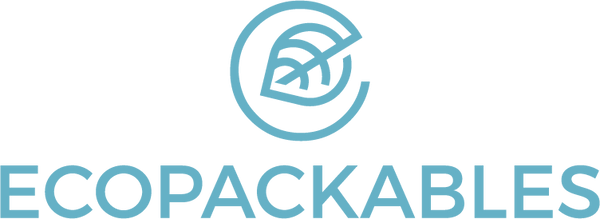Recycling is a cornerstone of sustainability, but not all materials with a recycling symbol are actually recyclable in curbside bins. Many consumers assume that if a product has a recycling logo, it belongs in the blue bin—but the reality is much more complicated.
Understanding the different types of plastics and their proper disposal methods is essential to reducing waste contamination and improving material circularity. Let’s break it down.
A Brief History of the Recycling Symbol
The now-familiar chasing arrows recycling symbol (♻️) was created in 1970 by Gary Anderson, a 23-year-old architecture student, for a design competition held by the Container Corporation of America. At the time, the symbol represented the general idea of recycling and environmental responsibility, but it wasn’t tied to a standardized system for materials.
Later, in 1988, the Society of the Plastics Industry (SPI) introduced the Resin Identification Code (RIC)—the numbers inside the recycling symbol (1-7)—to help classify different types of plastics based on their resin composition. However, this system was never meant to indicate that an item is universally recyclable. Instead, it was designed to help recycling facilities determine how to sort and process different plastics.
Not All Plastics Are Recyclable: The 7 Types of Plastic
Despite the presence of the chasing arrows symbol, not all plastics can or will be recycled. The reason? Plastics are made from hundreds of different resin formulas, and only a fraction of them are recyclable in standard facilities.
Here’s a breakdown of the seven major plastic types and their recyclability:
|
Resin Code and Plastic Type |
Common Uses |
Recyclable? |
|
#1 PET (Polyethylene Terephthalate) |
Water bottles, soda bottles, food containers |
Widely accepted in curbside bins |
|
#2 HDPE (High-Density Polyethylene) |
Milk jugs, detergent bottles, shampoo bottles |
Widely accepted in curbside bins |
|
#3 PVC (Polyvinyl Chloride) |
Pipes, vinyl flooring, shower curtains |
Rarely recycled due to toxic additives |
|
#4 LDPE (Low-Density Polyethylene) |
Plastic bags, poly mailers, squeezable bottles |
Not curbside recyclable, but accepted at thin film collection sites |
|
#5 PP (Polypropylene) |
Yogurt containers, takeout containers, medicine bottles |
Sometimes accepted, depending on local facilities |
|
#6 PS (Polystyrene / Styrofoam) |
Disposable cups, packing peanuts, egg cartons |
Rarely recycled, difficult to process |
|
#7 Other (Mixed Plastics, Bioplastics, etc.) |
BPA-containing plastics, multi-layered packaging |
Generally not recyclable |
The Harsh Reality: Hundreds of Plastic Variations
Beyond these seven categories, there are hundreds of plastic variations that make recycling even more challenging. Some plastic products are made from a combination of different resins, laminated layers, or chemically altered materials, making them impossible to recycle in standard facilities.
Even within the same resin category, variations in color, additives, or material structure can affect whether a plastic can be processed efficiently. For example:
-
Clear PET (#1) water bottles are easier to recycle than colored PET, which contains dyes that can interfere with the process.
-
Black plastic containers are often rejected because recycling machines cannot detect them properly.
-
Compostable bioplastics (#7) can’t be mixed with traditional plastics because they break down differently.
Why Do Some Recycling Facilities Accept Certain Plastics and Not Others?
Unlike aluminum or glass, which have well-established recycling markets, plastic recycling varies from place to place because there’s no federal or global standard for how recycling should work. Every city or region has different:
-
Recycling equipment – Some facilities have advanced technology that can process a wider variety of plastics, while others can only handle #1 and #2.
-
Market demand – If there’s no buyer for a certain type of recycled plastic, facilities won’t bother processing it.
-
Sorting capabilities – Some locations rely on manual sorting, while others have automated machines that can only handle certain shapes or sizes.
For this reason, it’s always important to check with your local recycling facility to see what materials they accept.
The Role of Businesses in Sustainable Packaging
Businesses play a crucial role in making recycling more accessible and effective. By using clear, accurate labeling and sustainable materials, brands can help customers make informed disposal decisions. Consider these best practices:
-
Use clear recycling instructions – Indicate whether the packaging is curbside recyclable, requires special drop-off, or is not recyclable at all.
-
Opt for sustainable materials – Whenever possible, choose packaging materials that are widely accepted in curbside recycling programs.
-
Educate consumers – Use packaging as an educational tool to help customers properly sort and dispose of their waste.
Conclusion: Smarter Recycling for a Circular Economy
Recycling is a powerful tool—but only if done correctly. Consumers should always check with their local recycling facilities to understand what they accept, while businesses should strive to simplify the process with clear labeling and sustainable packaging choices.
By working together, we can reduce waste contamination, improve recycling efficiency, and move towards a more circular economy. Let’s make recycling smarter—not just more widespread.

